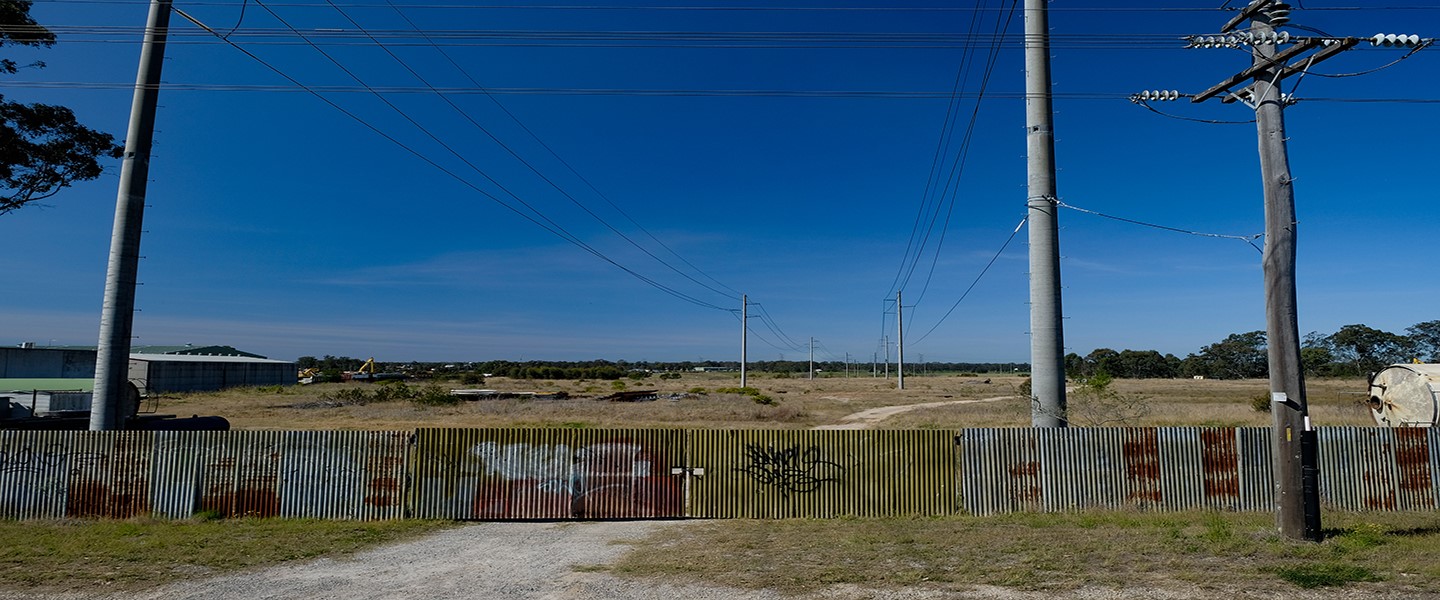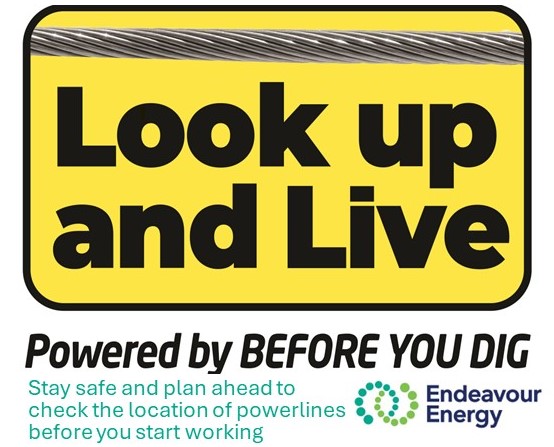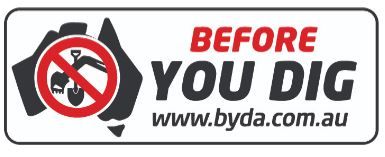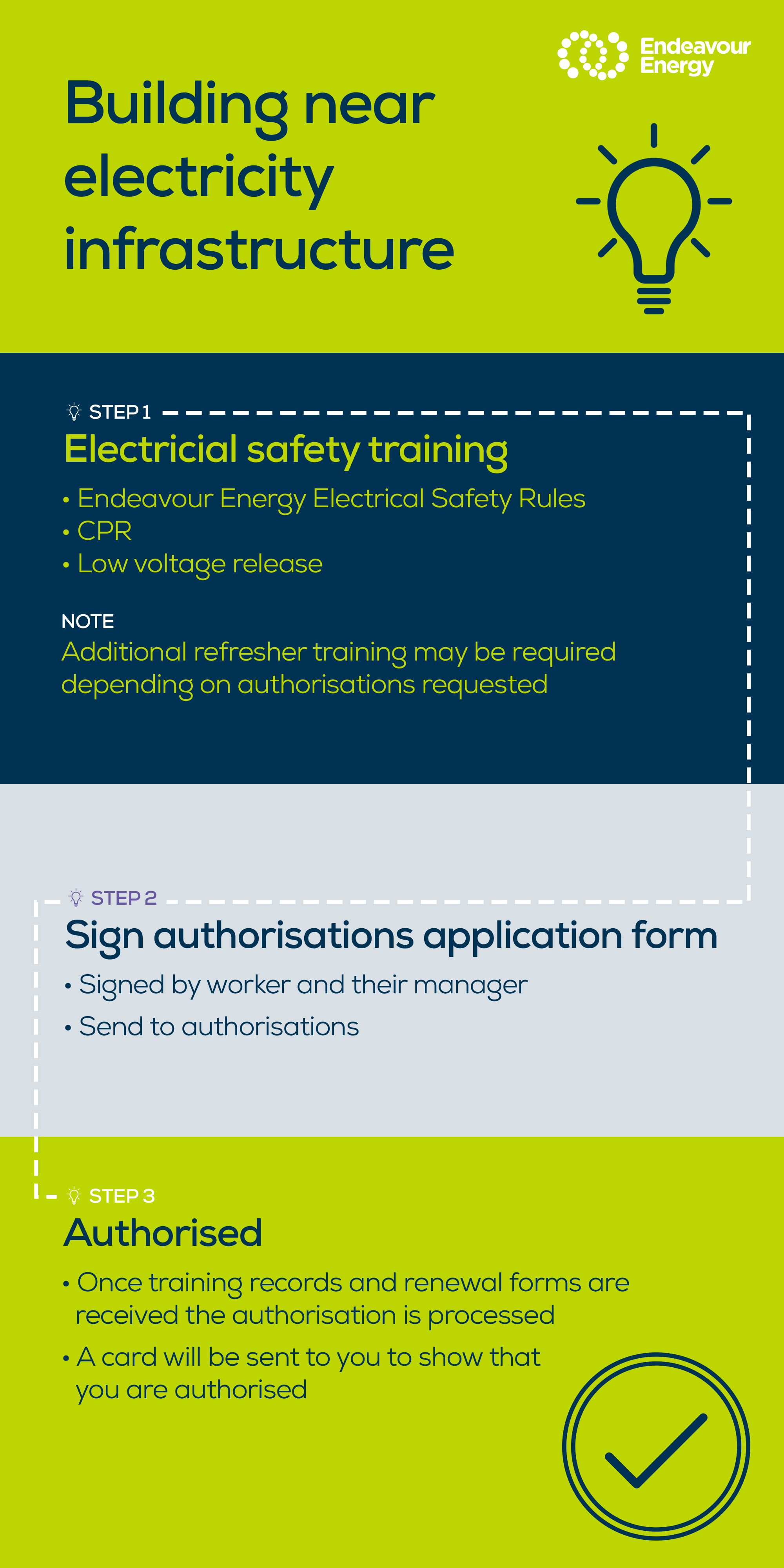Working alongside electricity infrastructure can be dangerous if the appropriate safety control measures are not applied.
That’s why it is important that statutory safety requirements and safe guidelines are adhered to. Not doing so can result in serious injuries and substantial damage to plant and equipment.
Safety on job sites

Building metallic structures near powerlines, such as temporary fencing or scaffolding, can place you at risk of dangerous induced voltages. Induced voltages can develop even if the metallic structure is built underneath, near or even outside a powerline’s easement.
Plan ahead to avoid the risk of potential induced voltages. If in doubt, please contact us on 131 003 for more information before proceeding.
Look up and Live

Don’t put your life on the line. The Look Up and Live app is a powerful safety tool for you to adequately plan and raise awareness of safe working requirements near powerlines.
Before you get onsite, check the location of powerlines with the free Look Up and Live app. It’s a simple worksite planning tool which provides powerline safety at your fingertips allowing you to seek specific information from Endeavour Energy concerning how to minimize the risk of contact while working in proximity to the electricity network.
When onsite, there are several ways to identify the location of electricity infrastructure to keep your workers and contractors safe. Here are the key ones:
- pre-plan your job by consulting with Endeavour Energy. We provide advice to the building industry, councils or any other organisation or individuals working near our overhead network. Place an enquiry by completing a 'General or safety advice' request through our Connections portal.
- develop site plans identifying the location of electrical infrastructure and effectively communicate these plans to staff. Keep the plans available
- designate and mark out travel paths around the site away from overhead powerlines. These can be used for moving ladders or long objects, and operating tip trucks, elevated platforms, drilling or excavating machinery, backhoes etc
- use visual indicators such as tiger tails, signage, spray paint or bunting to highlight the presence of overhead powerlines, underground cables and electrical infrastructure
- please remember that tiger tails and covers are not insulators and their presence does not mean you can work closer to powerlines. They simply provide a visual indicator to alert you to the presence of powerlines and they do not make powerlines safe to touch under any circumstances
- use range-limiting devices on excavators and cranes to assist in maintaining clearances from powerlines
- avoid contact with the point of attachment (where the power comes into a building). If you cannot maintain the required clearances, arrange for a power outage by calling Endeavour Energy on 131 003
- assign an observer, whose only job is to monitor and ensure safe clearances are maintained between operating machinery and powerlines
- always report any contact with powerlines immediately to Endeavour Energy on 131 003.
Before You Dig

Before You Dig is a free referral service designed to assist in preventing damage and disruption to infrastructure networks which provide essential services to the community every day. It provides a single point of contact to request information about any infrastructure networks on your project site without you having to contact them individually. Remember in NSW it is a legal requirement to use the BYD referral service prior to carrying out excavation works.
When digging, always please remember:
- verify and obtain all Before You Dig plans before starting excavation work. Just because there are overhead powerlines doesn’t mean there aren’t underground cables as well
- pre-plan your job by consulting with Endeavour Energy. We provide advice to the building industry, councils or any other organisation or individuals working near our underground network. Place an enquiry by completing a Request for Safety Advice and emailing it to construction.works@endeavourenergy.com.au
- using cable locating technologies, such as pot holing and non-destructive digging techniques, before commencing excavation
- cable depths can vary greatly. Don’t assume cable depths are consistent as tree roots, water, soil subsidence and human interaction can all cause changes over time
- excavation around street lighting, padmount substations (large, usually green boxes) or pillar boxes (small, usually green or cream boxes) must be avoided until guidance has been obtained from the electricity network provider
- always report any exposed cables immediately to Endeavour Energy on 131 003.
If you are in doubt and want more information regarding safe clearance distances, or need information on safe digging techniques, contact Endeavour Energy on 131 003 or visit the Before You Dig website: https://www.byda.com.au/
More information about safe work practices and safety clearances from overhead powerlines and underground cables is available in the Safe Work Australia and WorkCover NSW Codes of Practice:
Working in the Vicinity of Overhead and Underground Electric Lines Code of Practice
Work Near Overhead Powerlines Code of Practice 2006
Work Near Underground Assets Guide 2007
Electrical safety for the emergency services
Those working in our emergency services are faced with a multitude of hazards on their job sites. One which must be known about, but can often be overlooked, is the risk posed by damaged electrical equipment.
We provide specific advice for these workers here: Advice for Emergency Services workers
Electrical hazard awareness videos
Endeavour Energy has worked with Ausgrid, Essential Energy and Ergon Energy to develop Electrical hazard awareness videos to help keep you safe at work. These important safety tools highlight the hazards of working near overhead powerlines and underground cables and provide guidance on safe practices.
- Watch Electrical Hazard Awareness for Urban Workers
- Watch Electrical Hazard Awareness for Rural Workers
- Watch Electrical Hazard Awareness for the Emergency Services
Endeavour Energy has also developed a range of brochures and other collateral to help keep you safe on the job. Click on the links to download them in PDF format:
- Safety on the Job
- Safety Clearances for Pilots
- Electrical Safety Information for Builders and Construction Workers
- Electrical Safety Information for High Load Vehicles
- Electrical Safety Information for Plumbers
- Danger in the Pipeline
- High load sticker
You can also visit the WorkCover NSW and Safe Work Australia websites to download Codes of Practice that offer practical advice, guidance and preventative strategies to help mitigate and manage workplace risks to health and safety:
Are you qualified to do electrical work?
Please remember, carrying out your own electrical work without proper qualifications is not wise, breaks the law, and could cause serious injury or death. All electrical wiring work, including the connection and technical maintenance of fixed appliances, must be carried out by a licensed electrical contractor.
Naturally, you should always follow the manufacturer's electrical directions for using and maintaining these appliances.
You’ll find more information on electrical dos and don’ts check on the Fair Trading website:
Fair Trading electrical safety advice
Information for ASPs and contractors
Authorisations
Are you an ASP or contractor who wants to work on the Endeavour Energy network?
All workers who need to work on or near the electricity network, whether they be Endeavour Energy staff, Accredited Service Providers (ASPs) or contractors working for Endeavour Energy, must be authorised for the task that they are performing. If you require further information on how to become Authorised please contact the Endeavour Energy Authorisations team at authorisations@endeavourenergy.com.au.
To be authorised to work on or near Endeavour Energy’s network, you will need to attend training related to the work you will undertake. You will then need to submit evidence of your qualifications, and training to the Authorisations team, along with certification from your employer that you are competent to carry out the tasks that you will be authorised to perform. Once all of this is received by the authorisations section you will be sent a “Network Access Authorisation Card” showing your authorisation to work on or near the network. You must carry this card whenever you are working on our network.
To be authorised to work on Endeavour Energy’s network, you must be either:
- directly employed by Endeavour Energy
- employed by a company under contract to Endeavour Energy to carry out work
- employed by a company accredited to carry out contestable works under the NSW Accredited Service Provider scheme.
 Accreditation
Accreditation
If you will be undertaking customer funded contestable works on the network, your employer must be accredited by the NSW Department of Industry under the NSW Accredited Service Provider Scheme.
Information on the ASP accreditation scheme can be found here.
Electrical Safety Rules
As part of this authorisation, all workers must receive annual training in the Endeavour Energy Electrical Safety Rules. For more information on the Electrical Safety Rules and how they are applied, please contact the Electrical Safety team at Electrical.Safety@endeavourenergy.com.au.
Or download a copy of the Rules here: Endeavour Energy Electrical Safety Rules
Endeavour Energy acquires electricity easements so we can maintain and safely operate our network. Whether you own or rent a property, you need to know what you can and cannot do in electricity easements.
What are Electricity Easements
Electricity easements grant Endeavour Energy access rights to enter property and to control the use of land near powerlines, underground cables, and substations to maintain the safety and reliability of our network.
Why are easements necessary?
Easements help protect the safety of the residents living, working, and playing near powerlines. They help prevent serious incidents that could cause injury or even death.
Easements are also created to give Endeavour Energy’s workers clear access to operate, maintain, and upgrade sections of our network on land we do not own.
It is important to always keep the easement clear so regular maintenance, line upgrades, damage or technical faults can be attended to immediately.
How do I know if there are easements on my property?
It is important to be aware of easements and to know how they affect the use of your property.
An easement will be defined and registered on your property title.
Section 53 of the Electricity Supply Act 1995 covers statutory rights for electricity works built before 2006 without an easement.
Contact your solicitor or the Land Titles office to find out details of easements on your property, or alternatively, you can contact us by emailing easements@endeavourenergy.com.au.
We have developed a brochure with answers to the most commonly asked questions including what you can or cannot do in an Endeavour Energy easement as well as who to contact to obtain further information. Download a copy here.
Do you have easement information for developers?
Where network assets are constructed on private property under the customer funded contestable works process, Endeavour Energy has a right of access to carry out maintenance and other operational activities.
We do this by securing property tenure, for example by creating an easement.
Accredited Service Providers can read about additional technical requirements for establishing easements in the relevant Endeavour Energy Standard.
You can read an overview of our requirements for the establishment of land interest here: Land interest for contestable works
Where can the line be drawn on safety clearances from electricity assets?
Awareness of minimum safety clearances from powerlines and other electrical assets could mean the difference between a safe, successful and well managed project and a fatal accident.
You may also save time and money on your project by checking that the design of your home or building complies with important safety requirements without additional measures being taken.
We have developed a brochure to inform anyone working on or around buildings or worksites near our network of the safe distances that must be maintained from our network assets, whether they are overhead or underground. You can download a copy here.